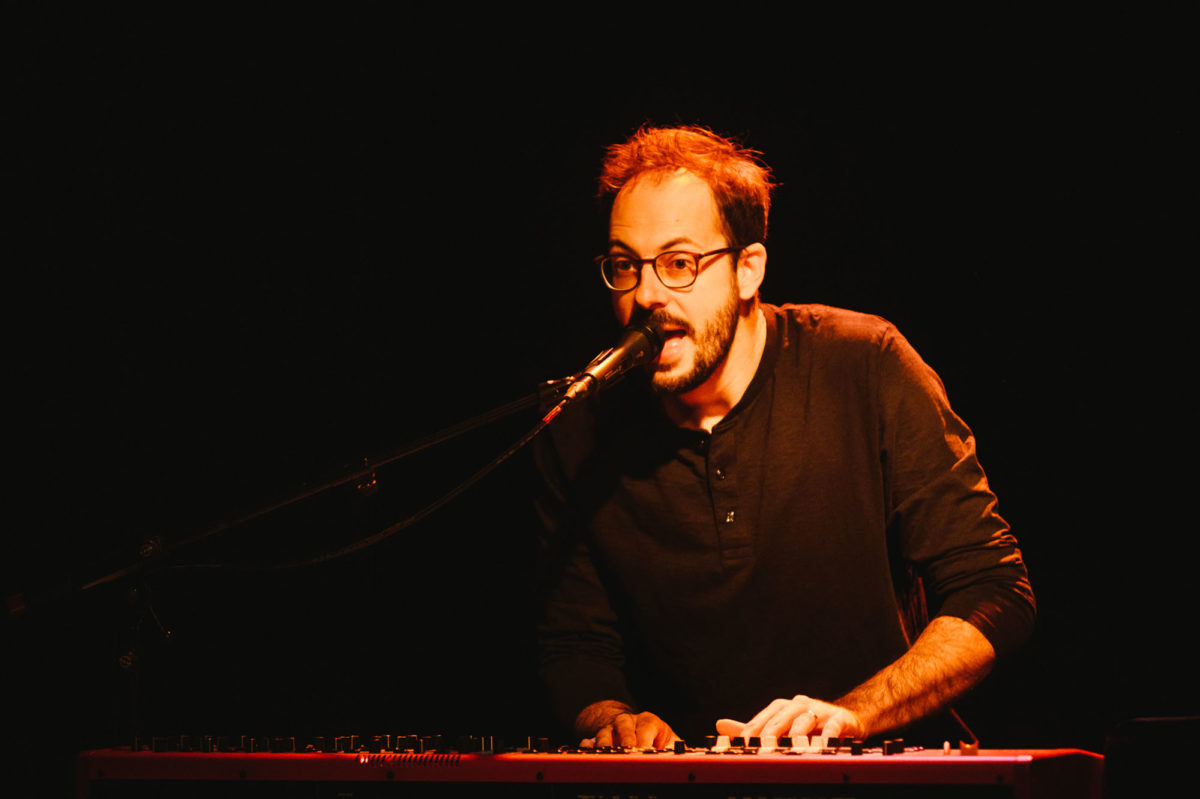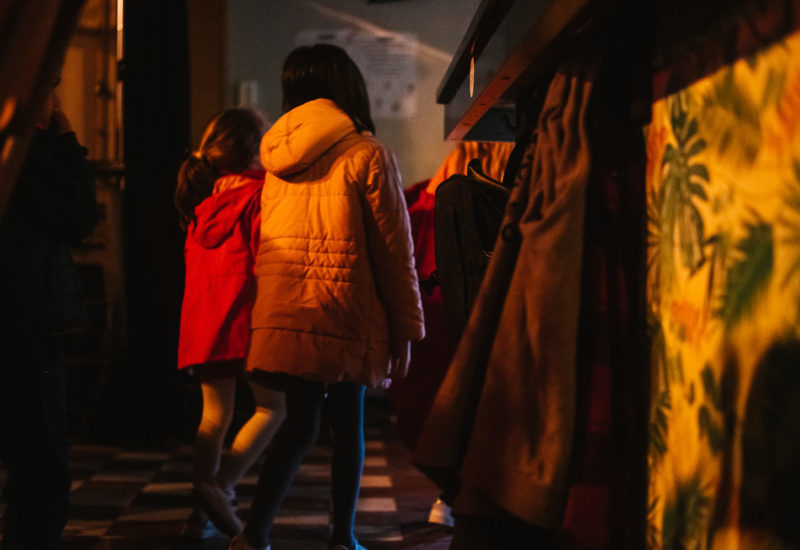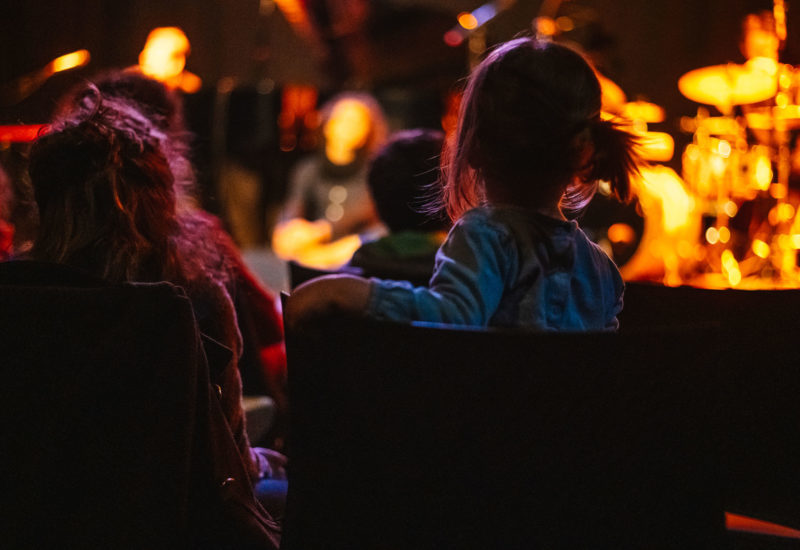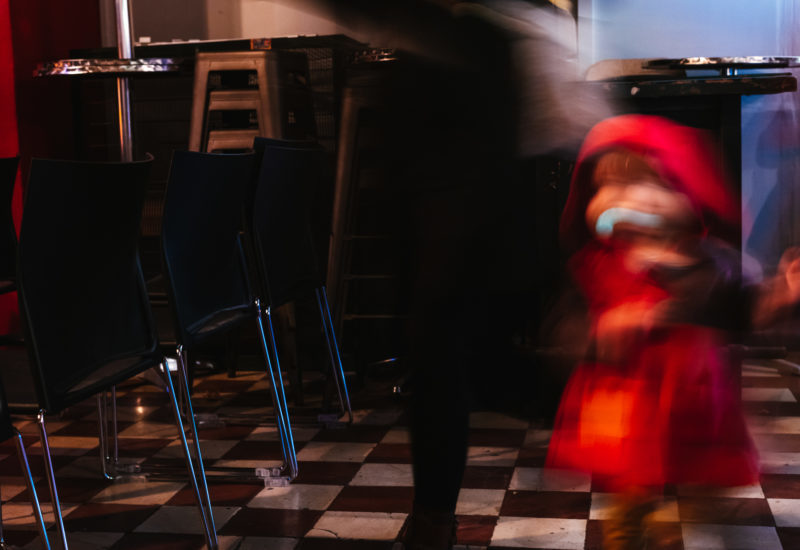Do it for the kids | “Imagine a hundred kids literally screaming for joy when the curtain falls.”
- Christopher Waldner
- octobre 2020

Christopher Waldner forms with Matthieu Garreau and Quentin Ripoll the trio of artists behind the show for young audiences Isayama, adapted from the novel by Pierre Bottero. Through this experience, he recounts the particularities and joys of creating and performing for this audience, noisy but lively, curious and enthusiastic, for whom the language of soundpainting is perfectly adapted.
Christopher Waldner (piano, synthétiseur)
Matthieu Garreau (batterie, looper, effets)
Quentin Ripoll (comédien)
↓ ↓ ↓
What are the challenges of creating shows for young audiences ? How can this creative process differ in the way you create, compose and think about a more classical musical repertoire ?
The young crowd is unfiltered, nature-painting, it expects nothing, it receives everything. They don’t know the codes of the show, they express themselves when they want, they don’t necessarily applaud, or else in the middle of nowhere, they heckle, comment… The challenge is to capture them and take them from the beginning to the end.
We bet a lot on the rhythm of our show: the first 3 scenes are identical in their construction while the 4th breaks this logic. The show is intense, there is no pause. The music often accompanies and underlines the actor’s gestures and words.
Regarding sound creation, we did not try to create music “for children”. We have tried to illustrate the subject as well as possible. When we were inspired by powerful sounds or asymmetrical rhythms, we did not hesitate.
The young crowd is unfiltered, nature-painting, it expects nothing, it receives everything.

What makes young people want to create for young audiences ? Does this also influence the way adults create and play ?
It’s a bit cliché, but for me it’s seeing stars in the eyes of the children at the end of the show. What you get back from an audience composed only of children (I am thinking of the school sessions in particular), I have never personally experienced with adults.
“Imagine a hundred kids literally screaming for joy when the curtain falls… it’s magic!”
I think it is commendable to try to get the same from adults! At least as far as the stars in their eyes are concerned. More seriously, I think that when you’re on stage for a concert, you mustn’t lose sight of the dimension of the show, you have to put yourself on stage and if possible succeed in breaking the codes to better capture the audience’s attention.

→ Children are a very receptive but probably also very demanding audience. The reception of a work happens a lot in the exchange for the young audience, is this the reason why the show “Isayama” is participatory ? Does it channel and respond to this need for exchange ?
Indeed, exchange is essential when addressing young audiences.
For this, we have composed a nursery rhyme made up of singing, body and vocal percussion, and offer them a collective improvisation thanks to the language of soundpainting *.
When the transmission of content is done before the performance (for school children in particular), it allows us to get to know each other, present the show and explain the context. The children then come on D-day with more interest.
During the performance, this allows us to keep their attention to the maximum: the children take part at very specific moments, but as they don’t know the course of the show, we have set up a little sound code to get them started. None of the performers on stage goes out of their roles to warn them.
Finally when they come home, they sing the Rhyme for a long time to come !
→ When creating a show for a young audience, one must also think about the interest and pedagogical approach of the audience. What is the relationship between this pedagogical interest and artistic requirements ?
I think it is not imperative for a performance for young audiences to have an educational dimension. But personally it is very close to my heart !
It is a challenge to create a show that is both artistically and pedagogically interesting. You have to choose the subject well and think about its potential staging from the outset.
For Isayama, it was love at first sight: the final moral is very beautiful, the relationship between this little boy and his grandmother touched me a lot, and the mountain scenery is very inspiring for the creation. The ingredients were there, and I think the recipe worked thanks to a talented and committed artistic team.

*
Soundpainting is a sign language, universal and multidisciplinary, allowing real-time composition for musicians, actors, dancers and visual artists. At present (2020), the language includes more than 1500 gestures that are signed by the Soundpainter (composer) to indicate to the performers what type of material is required. http://www.soundpainting.com/soundpainting-2-fr/